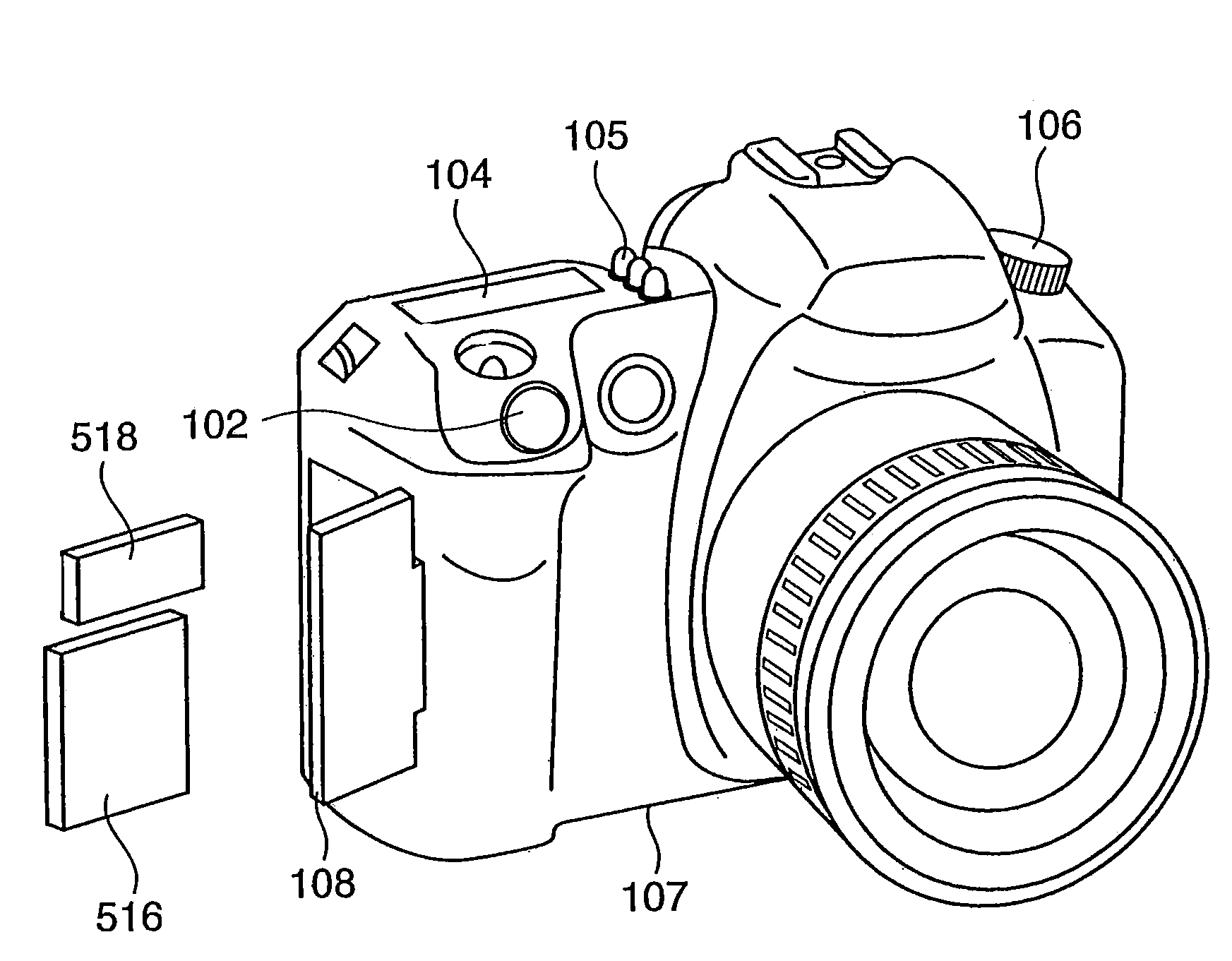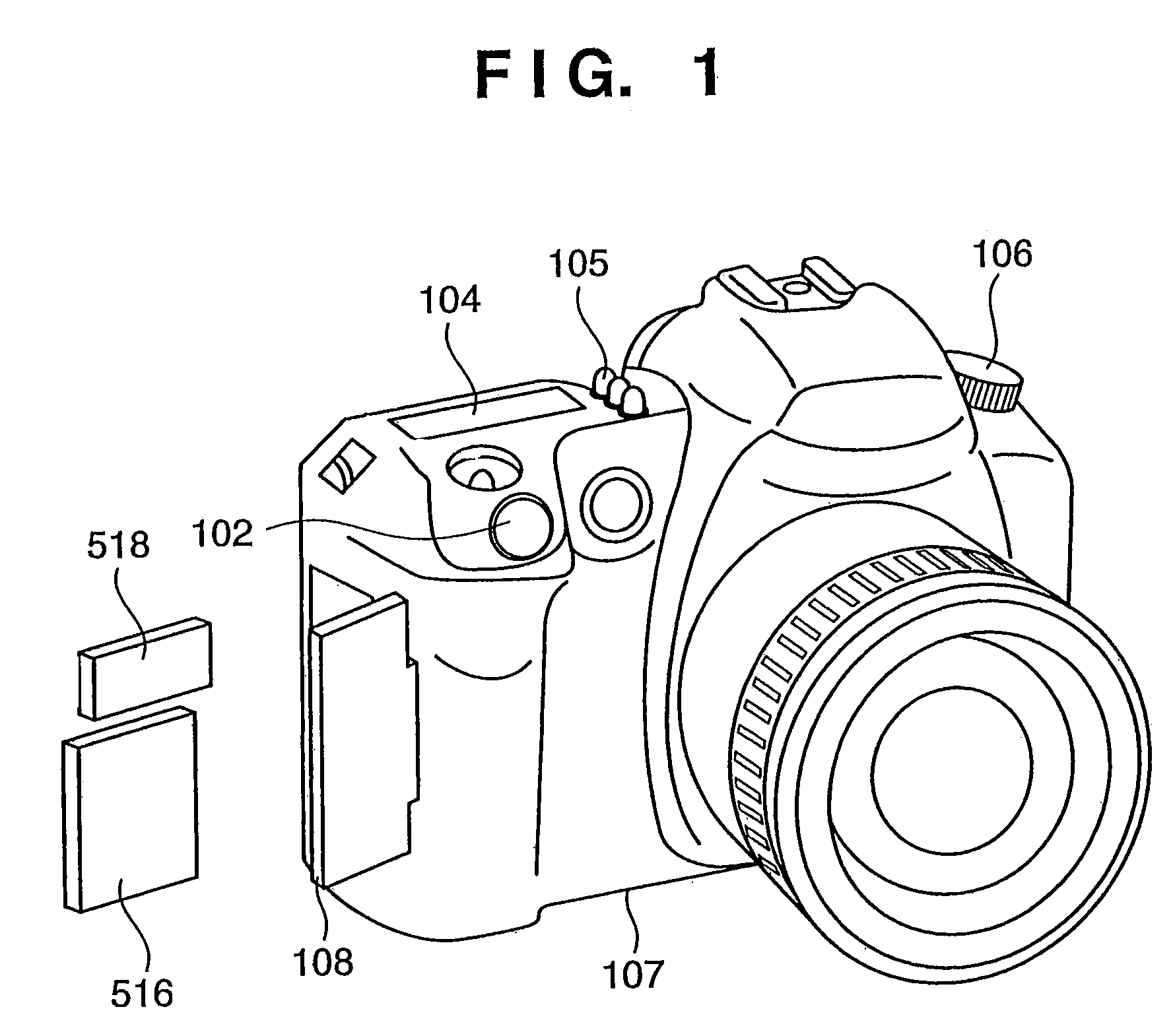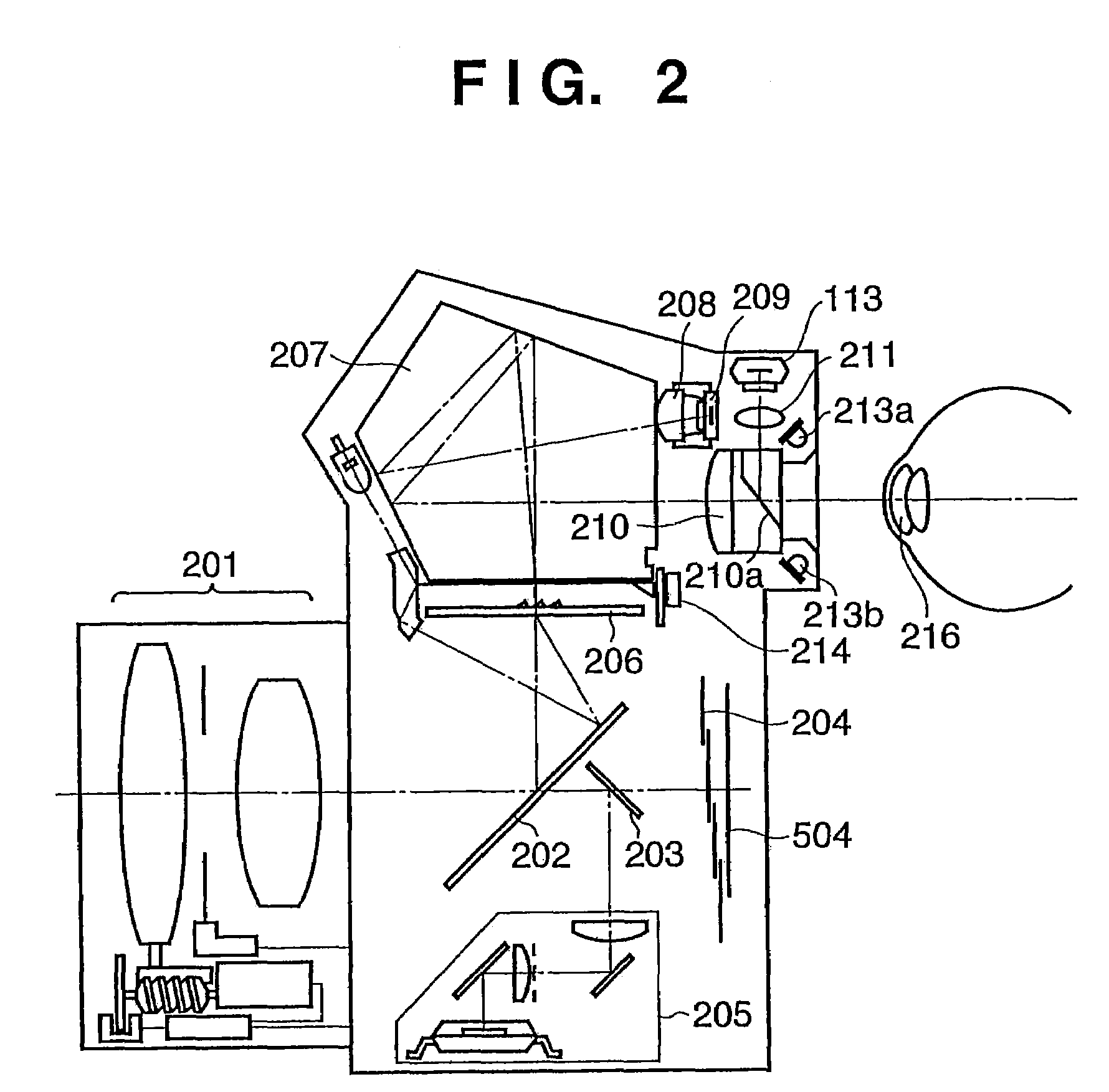Imaging apparatus and control method utilizing biometric information
a biometric information and imaging apparatus technology, applied in the field of imaging apparatus, can solve the problems of not going unnoticed, comparatively easy for another person to pose, and insufficient protection of photographers' copyrights,
- Summary
- Abstract
- Description
- Claims
- Application Information
AI Technical Summary
Benefits of technology
Problems solved by technology
Method used
Image
Examples
first embodiment
[0040]FIG. 1 is a front perspective view of a digital still camera according to an embodiment of the present invention. This embodiment will be described taking as an example a case where a biological-information image to be acquired is an iris image.
[0041]Pressing a shutter button 102 on the digital still camera produces a photography-start signal in response to which the image of a subject is captured by an image sensing device. A liquid crystal panel 104 for displaying photographic information is capable of displaying shutter speed and f-stop value or the set photographic mode, etc. A group 105 of setting buttons is for making various settings. A mode dial 106 is for changing over the mode of photography. A grip portion 107 is provided in order that a photographer may hold the camera. Part of the grip 107 can be opened and closed by a side cover 108. This makes it possible to insert and remove a memory card 516 and an ID card 518, which will be described later.
[0042]FIG. 2 is a s...
second embodiment
[0088]A digital still camera according to a second embodiment of the invention will now be described. This embodiment is equivalent to the first embodiment except for the fact that the function of the ID card 518 described with reference to FIG. 3, etc., is performed by the memory card 516. More specifically, part of the storage area of memory card 516, which is for storing data such as the images of subjects, is allocated for the purpose of storing iris information. The file structure of the storage area of memory card 516 is illustrated in FIG. 8. Here folders classified according to function, in the manner of an image directory 404 that stores an image-file group 405 of images of subjects and a moving-image directory 406 that stores a file group 407 of moving images, exist under a root directory 401. A biological-information directory (B_ID) 402 that stores the biological information of a photographer is provided as one folder, and a file (Iris_Data) 403 that describes iris infor...
second embodiments
Modifications of First and Second Embodiments
[0093](1) The above embodiment relates to a case where an image representing acquired biological information is iris information. However, the process from acquisition of the biological image to the decision regarding personal identification is the same also with regard to a fingerprint image or palm-print image. Therefore, if the camera grip 107 shown in FIG. 1 incorporates a fingerprint or palm-print sensor, these items of information can also be handled in the same manner as an iris image and either image may be used as a biological-information image.
[0094](2) In the above embodiments, whether an ID card or memory card bearing recorded iris information has been inserted or not is checked when the power supply is turned on. However, it is also permissible to make this determination at a timing at which it is believed a change in photographers has occurred. For example, the determination can be made immediately after a memory card is cha...
PUM
 Login to View More
Login to View More Abstract
Description
Claims
Application Information
 Login to View More
Login to View More - R&D
- Intellectual Property
- Life Sciences
- Materials
- Tech Scout
- Unparalleled Data Quality
- Higher Quality Content
- 60% Fewer Hallucinations
Browse by: Latest US Patents, China's latest patents, Technical Efficacy Thesaurus, Application Domain, Technology Topic, Popular Technical Reports.
© 2025 PatSnap. All rights reserved.Legal|Privacy policy|Modern Slavery Act Transparency Statement|Sitemap|About US| Contact US: help@patsnap.com



